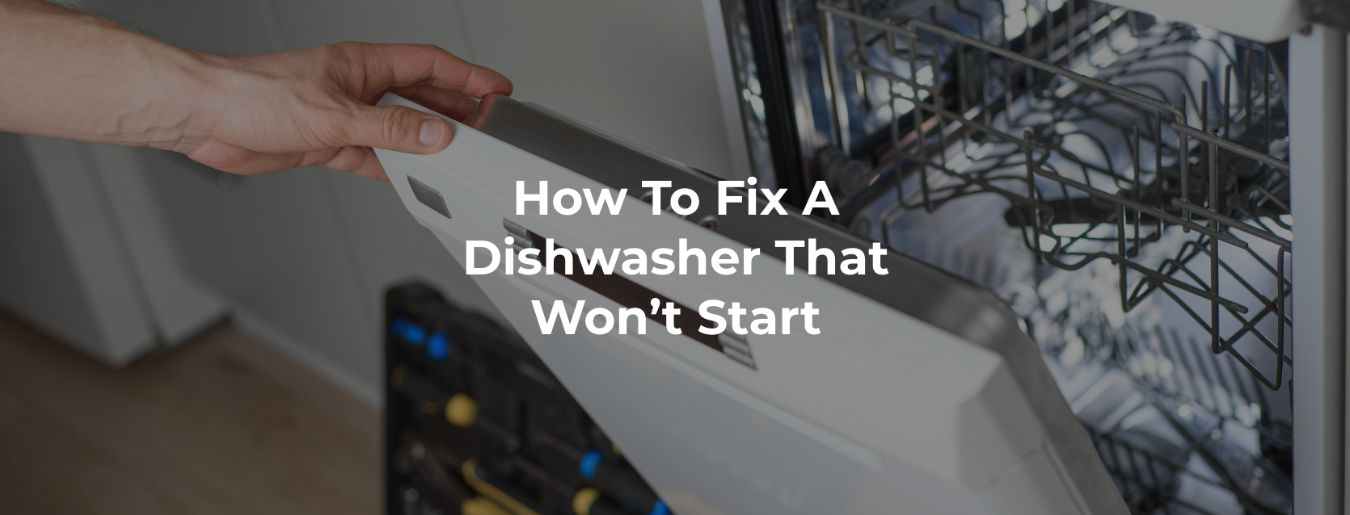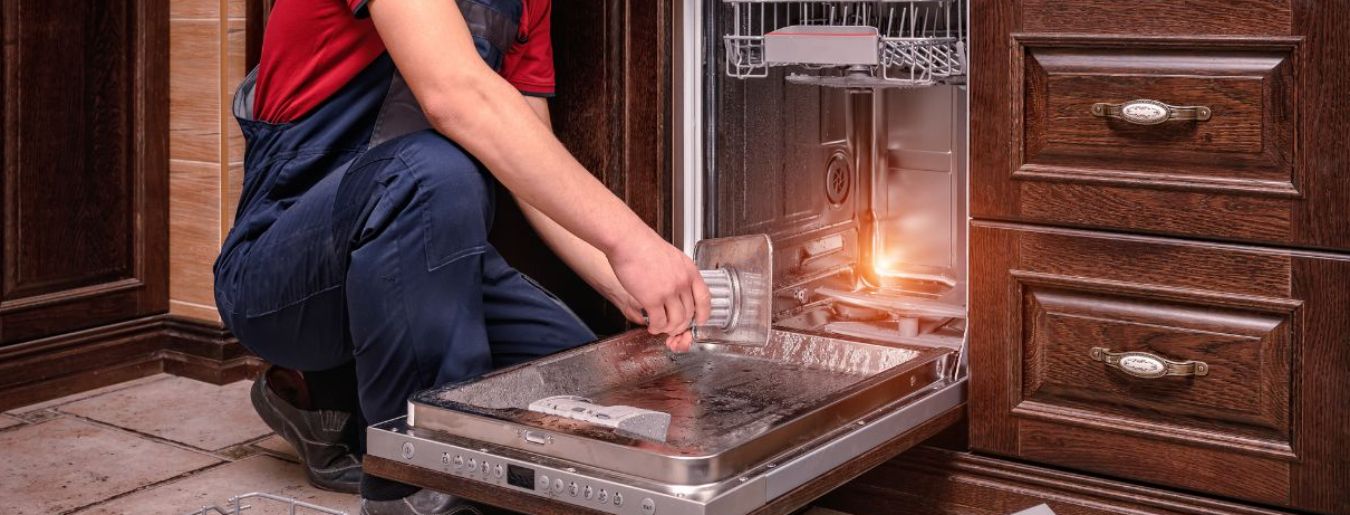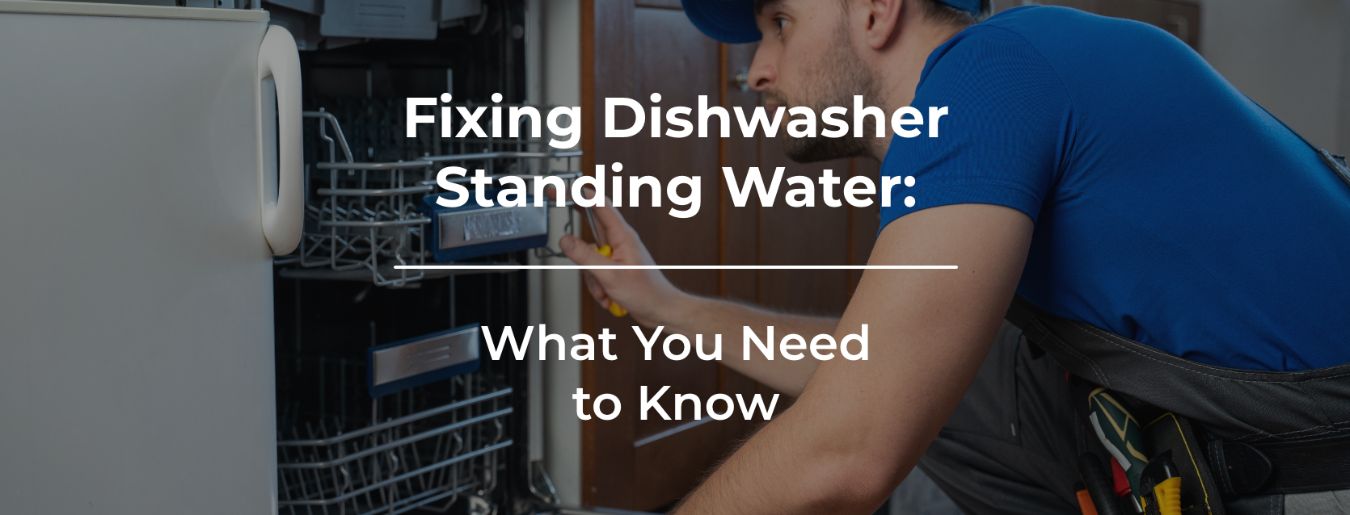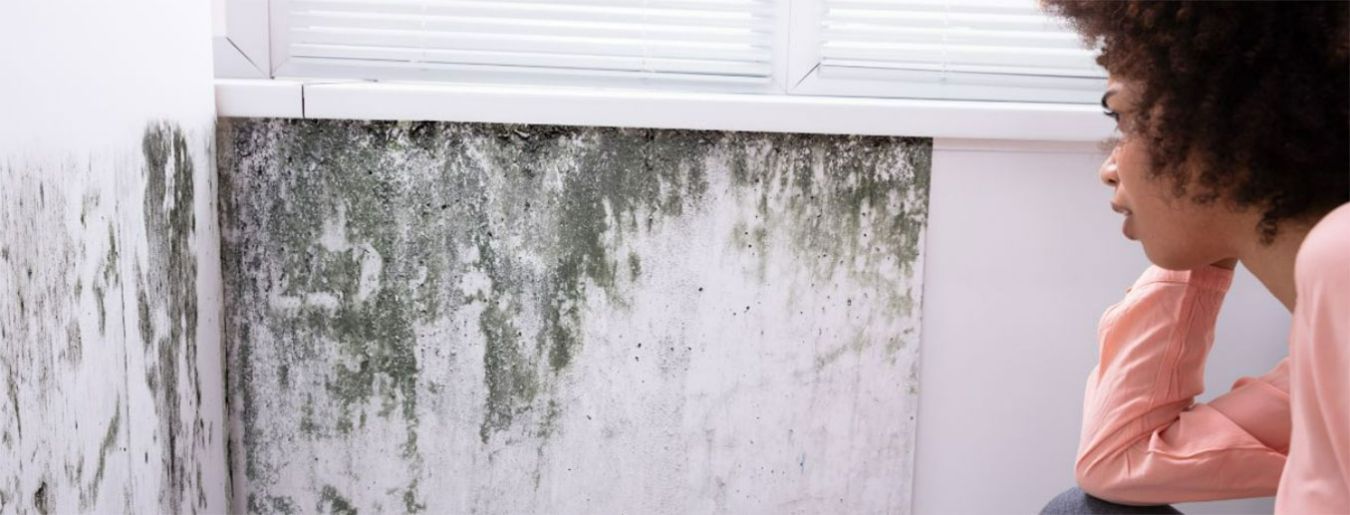A dishwasher is a modern-day convenience that saves us time and effort in the kitchen. However, encountering a dishwasher that refuses to start can be frustrating. Before resorting to calling a technician, there are several troubleshooting steps you can take to potentially resolve the issue yourself.
If you're experiencing difficulties with your dishwasher not starting, we're here to help you diagnose and fix the problem. Welcome to our comprehensive guide on troubleshooting and resolving dishwasher startup issues, we'll provide step-by-step instructions and valuable insights to ensure your dishwasher operates smoothly. Let's dive in!

Get Home Warranty Quotes
from Top Rated Authorized
Partners
Get a Quote
Most Common Reasons Why Your Dishwasher Won't Start
Power Supply Problems
One of the first things to check when your dishwasher won't start is the power supply. Ensure that the dishwasher is properly plugged into a functioning power outlet. Faulty or loose connections can disrupt the power flow, leading to startup issues. Additionally, inspect the power cord for any signs of damage, such as fraying or exposed wires. If you identify any problems, replace the power cord immediately to avoid potential hazards.
Door Latch Malfunction
A faulty door latch can prevent your dishwasher from starting. The door latch mechanism plays a crucial role in signaling the appliance that the door is securely closed. If the latch is misaligned, damaged, or dirty, it may not engage properly, causing the dishwasher to remain unresponsive. Clean the latch and its surrounding area thoroughly. If the problem persists, consider replacing the door latch assembly to restore functionality.
Control Panel Issues
The control panel acts as the command center of your dishwasher. When it malfunctions, various problems can arise, including startup failures. Inspect the control panel for any visible damage, such as cracked buttons or a non-responsive display. If you notice any issues, it's advisable to consult a professional technician to assess and repair the control panel or replace it if necessary.
Defective Thermal Fuse
The thermal fuse is a safety feature designed to prevent overheating within the dishwasher. If it detects excessive heat, it will interrupt the power supply, causing the appliance to shut down. In some cases, a defective thermal fuse can prevent the dishwasher from starting altogether. To check if the thermal fuse is the culprit, use a multimeter to test its continuity. If it's blown, replace the thermal fuse with a new one compatible with your dishwasher model.
Dishwasher That Won't Start: Step by Step Checking
Step 1: Verify the Power Supply
The first thing you need to do is ensure that your dishwasher is receiving power. Start by checking if the dishwasher is properly plugged into the electrical outlet. If it is, make sure the outlet itself is functioning by testing it with another appliance or a circuit tester. If there's no power in the outlet, you may need to reset the circuit breaker or replace a blown fuse.
Step 2: Examine the Door Latch
A dishwasher won't start if the door is not securely latched. Carefully inspect the door latch mechanism to see if anything is obstructing it or if it's damaged. Clean any debris or foreign objects that may be preventing the latch from engaging properly. If you notice any visible damage to the latch, it may need to be replaced.
Step 3: Check the Control Panel Settings
Incorrect settings on the control panel can prevent the dishwasher from starting. Make sure the dishwasher is set to the desired cycle and that any delay start feature is disabled. Check if any buttons or switches are stuck or unresponsive. If you find any issues, clean the control panel or replace faulty buttons or switches.
Step 4: Examine the Float Assembly
The float assembly is a safety feature that prevents the dishwasher from overflowing. If the float is stuck in the raised position, it can signal the dishwasher to stop working. Locate the float assembly, usually at the bottom of the dishwasher, and ensure it moves freely. Clean any debris that might be interfering with its movement.
Step 5: Test the Door Switch
The door switch is another safety mechanism that stops the dishwasher from running if the door isn't closed properly. To test the door switch, you'll need a multimeter. Disconnect the dishwasher from the power supply, locate the door switch, and test its continuity when the door is closed. If the multimeter doesn't show continuity, the door switch may need to be replaced.
Step 6: Reset the Dishwasher
Some dishwasher models have a reset function that can resolve minor issues. Consult your dishwasher's user manual to find out how to perform a reset. Typically, you'll need to press a series of buttons or turn off the power supply for a few minutes. Resetting the dishwasher can often clear temporary glitches and restore its functionality.
Step 7: Check for Error Codes
Many modern dishwashers come equipped with diagnostic systems that display error codes when something goes wrong. Look for any error codes on the dishwasher's control panel or refer to the user manual to decipher them. Error codes can provide valuable insights into the underlying problem, enabling you to take the appropriate steps to fix it.
Step 8: Clean the Filters and Spray Arms
Clogged filters and spray arms can interfere with the dishwasher's performance and prevent it from starting. Remove the filters and spray arms according to the manufacturer's instructions. Rinse them under running water and scrub away any accumulated debris or residue. Once cleaned, reassemble them properly and attempt to start the dishwasher again.
Step 9: Inspect the Motor and Pump Assembly
If you've reached this step and your dishwasher still won't start, it's time to inspect the motor and pump assembly. However, this step requires a deeper level of expertise and knowledge of dishwasher mechanics. If you're comfortable with appliance repair, consult your dishwasher's service manual to locate the motor and pump assembly. Check for any visible signs of damage or wear. If you notice any issues, it may be necessary to call a professional technician for further diagnosis and repair.
Step 10: Call for Professional Assistance
If you've followed all the troubleshooting steps and your dishwasher still refuses to start, it may be time to seek professional help. Contact the manufacturer's customer service or a reputable appliance repair service. Explain the problem you're experiencing and provide them with the model and serial number of your dishwasher. A qualified technician will be able to diagnose and fix the issue safely and efficiently.

Let us find the
Best Home Warranty Provider
for your Home's Needs
The Importance of Dishwashers' Preventive Maintenance
Dishwashers, like any other household appliance, require preventive maintenance to ensure their optimal performance and longevity. Regular maintenance helps to prevent potential issues and keeps your dishwasher running smoothly. Here are a few reasons why preventive maintenance is crucial for dishwashers:
-
Efficient Cleaning: Over time, food particles, grease, and mineral deposits can build up inside the dishwasher. This can affect its ability to clean dishes effectively. Regular maintenance, such as cleaning the filter, spray arms, and interior surfaces, helps to remove these deposits and ensures that your dishwasher continues to clean dishes efficiently.
-
Preventing Clogs: Dishwashers have drainage systems that can become clogged with food debris, soap residue, or mineral buildup. These clogs can hinder proper drainage, leading to standing water in the dishwasher or poor cleaning results. Regular maintenance, including checking and cleaning the drain filter and removing any blockages, helps prevent clogs and promotes optimal drainage.
-
Extending Lifespan: By performing preventive maintenance, you can extend the lifespan of your dishwasher. Regular cleaning and maintenance tasks prevent excessive wear and tear on components, reducing the risk of breakdowns and the need for costly repairs or premature replacement.
-
Energy Efficiency: A well-maintained dishwasher operates more efficiently, which can result in energy savings. When dishes are cleaned effectively, there is no need to rerun cycles or use additional water and energy. Additionally, keeping the dishwasher's components clean and free from debris ensures that they operate optimally, further contributing to energy efficiency.
-
Preventing Odors: Over time, lingering food particles and residue can cause unpleasant odors to develop inside the dishwasher. Regular maintenance, such as cleaning the interior, removing debris, and running maintenance cycles with vinegar or specialized dishwasher cleaners, helps eliminate odors and keeps your dishwasher smelling fresh.
-
Identifying Issues Early: During routine maintenance, you have the opportunity to inspect various components of your dishwasher for any signs of wear, damage, or malfunction. By catching and addressing issues early on, you can prevent them from escalating into more significant problems that disrupt the dishwasher's operation.
By implementing a preventive maintenance routine for your dishwasher, you can ensure its optimal performance, enhance its lifespan, and avoid inconvenient breakdowns. Refer to your dishwasher's user manual for specific maintenance guidelines and recommendations from the manufacturer.



 Prev Post
Prev Post







